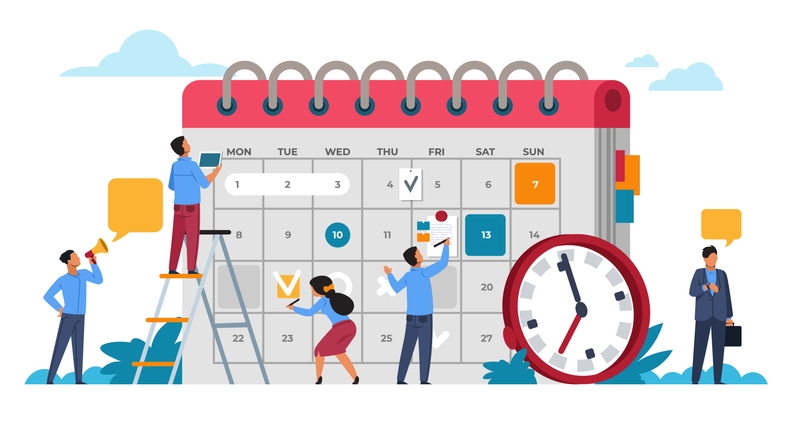In the world of digital marketing, having a website is like having a storefront on the busiest street in town. Yet, without an effective content strategy, that storefront may as well be invisible. For small business owners, marketing professionals, and content creators, the secret to standing out lies in creating a content strategy that not only aligns with your business goals but also engages your audience. This blog post will guide you through the art of crafting a content symphony that drives success and keeps your audience coming back for more. We’ll explore insights, tips, and real-world examples to make your content strategy sing.
The Foundation of Your Content Strategy
Creating an effective content strategy begins with understanding its foundation. Think of it as building a house; you need a strong base to ensure everything else stands firm. At its core, a content strategy is a plan that outlines how you will use content to achieve your business goals. It sets the tone for your brand, guides your messaging, and defines your target audience.
Your content strategy should be aligned with your business objectives. For example, if your goal is to increase brand awareness, your content should focus on telling your brand’s story and creating memorable experiences. Conversely, if you’re looking to drive sales, your content should focus on showcasing your products and services in a way that resonates with your audience’s needs and desires.
By establishing a clear foundation for your content strategy, you create a roadmap that guides all your content creation efforts. This ensures consistency in messaging, tone, and style, allowing you to effectively communicate your brand’s value to your audience.
Defining Your Audience
Before you can create content that engages your audience, you must first understand who they are. This step is crucial because it helps you tailor your content to their needs, preferences, and interests. Start by developing buyer personas—fictional representations of your ideal customers.
When defining your audience, consider demographic information such as age, gender, location, and income level. Additionally, explore psychographic data, which includes interests, values, and lifestyle choices. This information provides valuable insights into what motivates your audience and how you can connect with them on a deeper level.
Understanding your audience allows you to create targeted content that speaks directly to them. It helps you address their pain points, answer their questions, and offer solutions that meet their needs. By making your audience the focal point of your content strategy, you build trust and establish a strong connection that fosters long-term engagement.

Setting Clear Goals and Objectives
A successful content strategy is goal-driven, meaning it has clear objectives that guide your efforts. These goals serve as a compass, ensuring that every piece of content you create contributes to your overall business objectives. When setting goals, use the SMART criteria—Specific, Measurable, Achievable, Relevant, and Time-bound.
For example, if your goal is to increase website traffic, set a specific target, such as a 20% increase in monthly visits within six months. This goal is measurable, achievable, relevant to your business, and time-bound, providing a clear framework for success.
Once you’ve established your goals, break them down into smaller, actionable objectives. These could include publishing a certain number of blog posts per month, launching a social media campaign, or conducting customer surveys. By setting clear goals and objectives, you create a roadmap for your content strategy that keeps you focused and motivated.

Conducting a Content Audit
Before creating new content, take stock of what you already have. A content audit is a comprehensive review of your existing content to assess its performance, relevance, and alignment with your current goals. This process provides valuable insights into what’s working, what needs improvement, and what should be retired.
During a content audit, evaluate each piece of content based on key metrics such as page views, engagement, and conversion rates. Identify high-performing content that resonates with your audience and consider ways to replicate its success. Similarly, flag underperforming content and explore opportunities for improvement, such as updating outdated information or optimizing for SEO.
A content audit helps you identify gaps in your content library, allowing you to create new content that addresses unmet needs. It also ensures that your content strategy is data-driven, enabling you to make informed decisions that enhance your overall performance.
Crafting Compelling Content
Once you’ve laid the groundwork for your content strategy, it’s time to start crafting compelling content that captivates your audience. Great content is built on creativity, storytelling, and a deep understanding of your audience’s needs and desires.
When creating content, focus on delivering value. Whether through informative blog posts, engaging social media updates, or captivating videos, your content should provide insights, answers, and solutions that resonate with your audience. Use storytelling techniques to create narratives that draw readers in and keep them engaged.
Additionally, use a variety of content formats to cater to different preferences and consumption habits. Consider incorporating visual elements such as infographics, videos, and images to enhance your message and make your content more memorable.

Leveraging SEO Best Practices
To ensure your content reaches a wider audience, it’s essential to leverage SEO best practices. Search engine optimization (SEO) is a powerful tool that improves the visibility of your content in search engine results, driving organic traffic to your website.
Begin by conducting keyword research to identify relevant terms and phrases that your audience is searching for. Integrate these keywords naturally throughout your content, including in titles, headings, and meta descriptions. Use internal and external links to enhance your content’s authority and relevance.
Optimize your content for user experience by ensuring fast loading times, mobile responsiveness, and easy navigation. Additionally, create high-quality backlinks by collaborating with industry influencers and guest posting on reputable websites. By implementing SEO best practices, you increase the likelihood of your content being discovered by your target audience.
Engaging Your Audience
Creating content is only part of the equation; engaging your audience is equally important. To foster meaningful connections, encourage interaction and participation through calls-to-action (CTAs), comments, and social media engagement.
Incorporate CTAs strategically throughout your content to guide your audience toward desired actions, such as signing up for a newsletter, sharing a post, or leaving a comment. Encourage feedback by asking open-ended questions and inviting readers to share their thoughts and experiences.
Leverage social media platforms to amplify your content and engage with your audience in real-time. Use polls, quizzes, and live sessions to create interactive experiences that build community and strengthen relationships. By actively engaging your audience, you create a loyal following that supports your brand’s growth.
Analyzing Performance and Iterating
A successful content strategy is dynamic and adaptable, evolving based on performance data and changing audience needs. Regularly analyze your content’s performance using analytics tools to gain insights into what works and what doesn’t.
Monitor key metrics such as website traffic, bounce rates, conversion rates, and social media engagement. Use this data to identify trends, measure progress toward your goals, and pinpoint areas for improvement. Test different approaches through A/B testing to determine what resonates best with your audience.
Be open to experimentation and iteration, continually refining your content strategy based on insights gained from performance analysis. By staying agile and responsive, you ensure that your content remains relevant, impactful, and aligned with your business objectives.

Building a Content Calendar
To maintain consistency and organization, develop a content calendar that outlines your content production and publication schedule. A content calendar is a visual tool that helps you plan, track, and manage your content efforts over time.
When building a content calendar, consider important dates, events, and seasonal trends relevant to your industry. Schedule content releases to coincide with these occasions, ensuring that your brand remains top-of-mind for your audience.
Use project management tools to collaborate with your team and streamline the content creation process. Assign tasks, set deadlines, and establish workflows to ensure timely delivery and publication. A well-organized content calendar keeps your team aligned and accountable, helping you achieve your content strategy goals.

Nurturing Community and Brand Advocacy
A successful content strategy extends beyond transactional interactions; it fosters community and brand advocacy. Cultivate a sense of belonging among your audience by creating spaces for dialogue, collaboration, and shared experiences.
Encourage user-generated content by inviting your audience to share their stories, testimonials, and creative ideas related to your brand. Highlight and celebrate your community’s contributions through features, shout-outs, and recognition.
Build brand advocacy by rewarding loyal supporters with exclusive offers, access to events, and personalized experiences. Empower your community to become brand ambassadors who champion your message and spread the word about your offerings. By nurturing a strong community, you create a network of passionate advocates who amplify your brand’s reach and impact.
Conclusion
Flat design is a powerful tool in the arsenal of web designers and digital marketers. Its ability to create user-friendly websites is unparalleled, offering speed, efficiency, and accessibility. By understanding its principles and implementing them effectively, you can transform your digital projects into engaging, user-centric experiences.
Remember, flat design is about more than aesthetics; it’s about creating meaningful interactions that resonate with users. By focusing on simplicity, usability, and versatility, you can harness the power of flat design to elevate your work and achieve your goals.
If you’re ready to explore the world of flat design and see its benefits firsthand, now is the time. Delve deeper into the principles of flat design, experiment with new approaches, and watch as your websites shine in the digital landscape.

